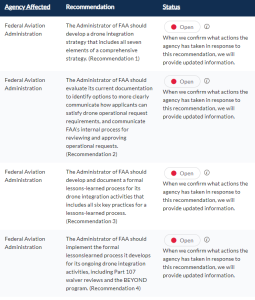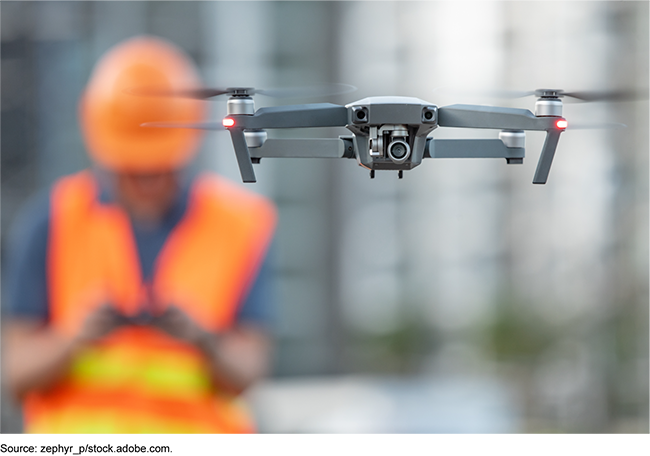According to a report released by the US Government Accountability Office (GAO) on 26 January 2023, the “FAA should improve its approach to integrating drones into national airspace system”.
The report says: “FAA has developed various planning documents to manage its efforts to integrate drones. But, it has yet to develop a comprehensive strategy to guide these efforts. For example, FAA’s documents don’t include important elements—such as goals, objectives, and milestones—that would help FAA manage more effectively.”
The GAO made four recommendations, including that FAA: (1) develop a drone integration strategy that includes all elements of a comprehensive strategy and (2) evaluate its current documentation to identify options to more clearly communicate how applicants can satisfy drone operational request requirements and FAA’s process for reviewing and approving operational requests. The FAA concurred with GAO’s recommendations.

GAO found that FAA’s documents partially include four of the seven elements of a comprehensive strategy but do not include the remaining three elements. For example, FAA’s documents describe activities that are completed, under way, and planned. However, the documents do not identify drone integration goals and objectives and partially include milestones and performance measures for all activities. FAA officials stated they are developing a drone integration strategy. However, the strategy’s release has been delayed multiple times, and whether the strategy will provide a comprehensive approach is unclear. Establishing a strategy with all key elements is critical to FAA’s ability to effectively manage its drone integration efforts.
“The FAA has not clearly communicated: how drone operators’ requests to conduct advanced operations can meet specific requirements or what is FAA’s process for reviewing and approving those requests. Currently, drone operators seeking to conduct advanced operations not allowed under existing rules must submit operational requests by applying for waivers or exemptions to conduct these operations,” says the report.
However, more than half of 15 industry stakeholders told GAO that FAA has not clearly communicated the requirements it looks for when reviewing and approving advanced operations. As a result, they faced challenges working with multiple FAA offices on these requests. For example, stakeholders said they experienced lengthy reviews of their requests, and at times received conflicting information from different FAA offices. FAA officials said that they recognize that their process for reviewing operational requests is complex and that they plan to take steps to improve FAA’s guidance.
“By more clearly communicating how to satisfy FAA’s requirements and FAA’s process for reviewing operational requests, applicants could be better positioned to provide FAA with the quality information needed to assess these requests.”
(Image: Zephyr p/stock)
For more information visit:




